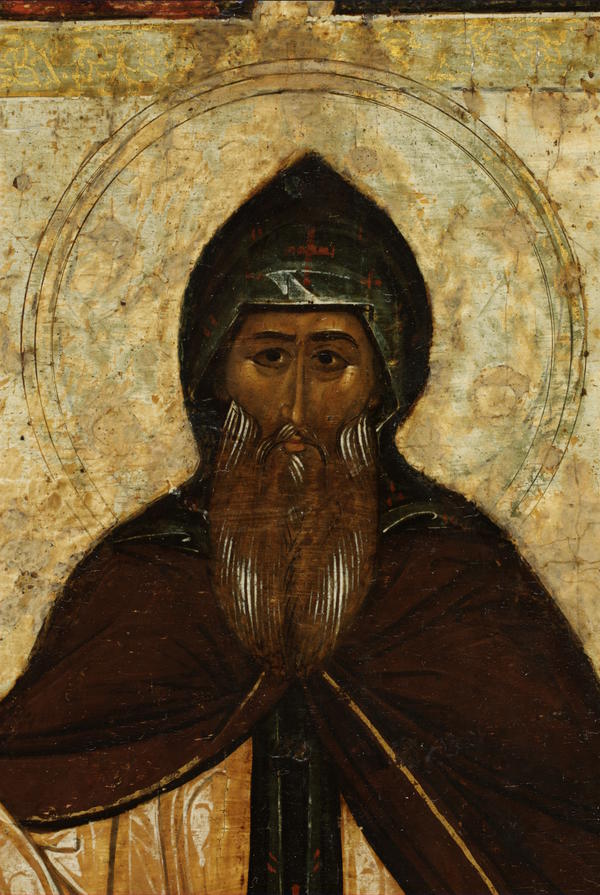Princes Fyodor, David and Constantine, who lived in the 13th century, were the first Yaroslavl saints. They were canonized in 1463. According to the life story of the saints, Fyodor Rostislavovich was nicknamed Black. He married the only daughter of Yaroslavl prince Basil and after that he ruled in Yaroslavl. More than once Fyodor went to the Horde and each time he stayed with the Tatar khan for a long time. During one of such long periods of absence his wife passed away, and his son Michael became the ruler. Then Fyodor married the khan’s daughter, who was baptized, their sons David and Constantine are also depicted on the icon.
Fyodor, David and Constantine
Время создания
Mid-16th century
Размер
132x108 cm
Техника
Tempera
Коллекция
Выставка
3
Открыть в приложении#1
Unknown author
Fyodor, David and Constantine
#7
#8
When Michael died, Fyodor and his family returned to Yaroslavl. He was helped to do so by the Tatars - they captured and looted the city. At the end of the 13th century prince Fyodor died and was buried in the Monastery of Our Savior. David and Constantine were buried in a tomb next to their father after their deaths.
Fyodor did not lead a righteous life, but according to the legend his relics and relics of his sons miraculously healed those who honored them. Later there were written lives of the miracle workers, and ancient Russian artists began to create icons referring to those life stories.
#9
On the icon from the collection of the Yaroslavl Museum Reserve the image of the princes corresponds to the icon-painting tradition that developed in the 15th century. Yaroslavl artists painted it on a linden board consisting of four parts. In the central part prince Fyodor in a monks robe is represented. To the sides of him there stand his sons David and Constantine. They are depicted smaller of height and wearing prince’s clothes - cloaks and hats.
#10
The middle part of the icon is surrounded with 36 miniature drawings that make two rows. These are miniatures that tell about life of the saints, their deeds and miracles. Here most of the drawings are dedicated to healings from the relics. Events on the miniatures take place against the background of the Yaroslavl Monastery of Our Savior.
#11
The color scheme of the icon is built on a contrasting combination of the light green background and darker shades, the figures of the saints are supplemented with contrasting white details. There are no inscriptions on the icon. They probably could be on the frame, but it hasn’t survived to this day.
#12
The icon Fyodor, David and Constantine, with the life story is a temple image that was next to the relics of the saints in the church of Yaroslavl miracle workers. In 1951, the icon was transferred to the Academician I.E. Grabar State Central Art Restoration Workshop. There it was “opened” - they removed the old upper coating and later painted layers.
#13
Yaroslavl Museum Reserve
читать дальшескрыть
00:00
00:00
1x
Fyodor, David and Constantine
Время создания
Mid-16th century
Размер
132x108 cm
Техника
Tempera
Коллекция
Выставка
3
Открыть в приложении
Поделиться


